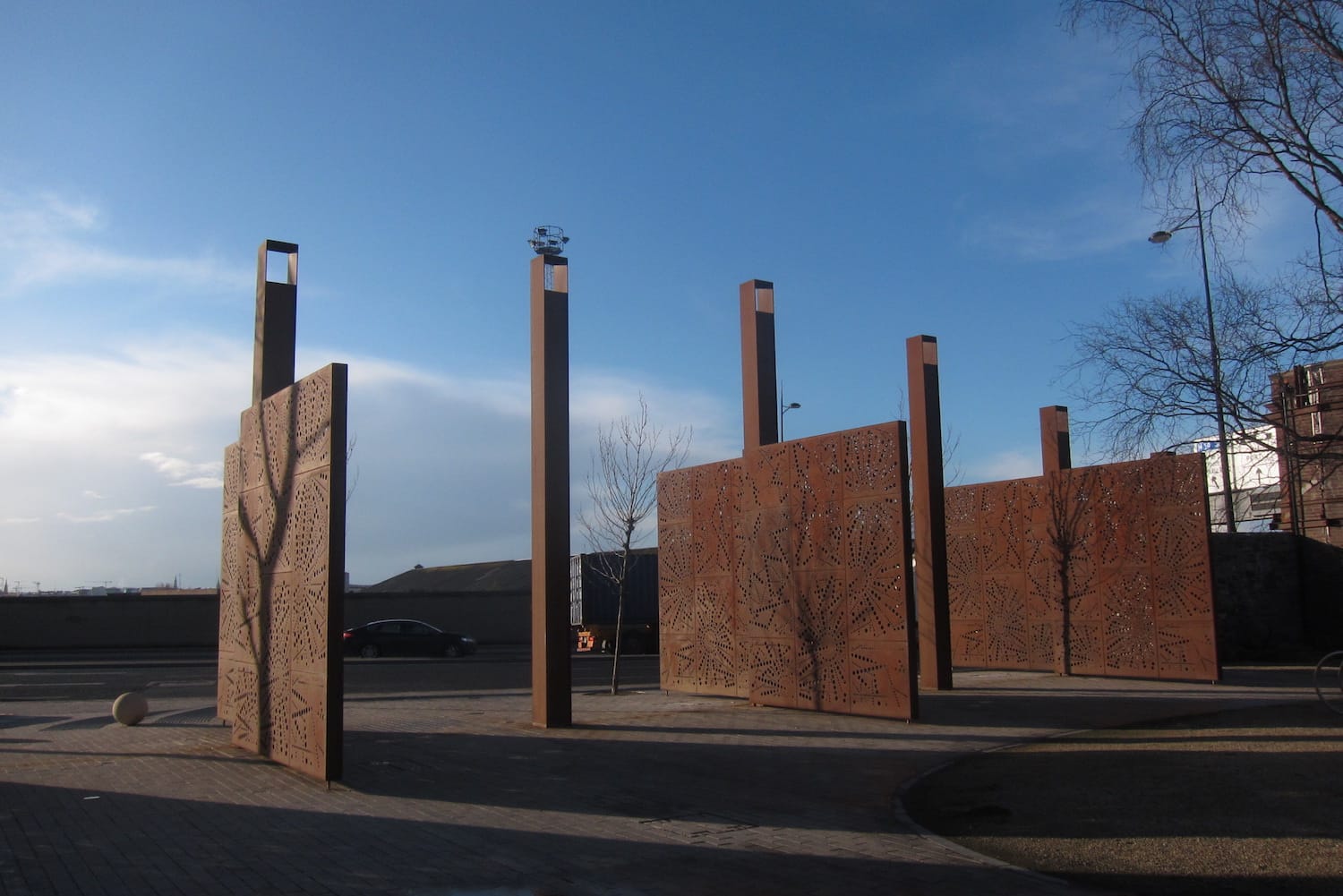What’s the best way to tell area residents about plans for a new asylum shelter nearby?
The government should tell communities directly about plans for new asylum shelters, some activists and politicians say.
The blue crane that stands proudly at Dublin Port isn’t just any crane. It’s Crane 292. And it has a history.

The lattice arm of the crane sticks out from the cabin, pointing south over the rusted red steel panels engraved with “Dublin Port”. The arm was once used to unload bulk material, says Lar Joye, port heritage director of Dublin Port. Stuff “such as coal”, he says.
Now, however, it marks the entrance to Dublin Port.
It was built by the Stothert and Pitt Company in Bath, England, he says. In 1964, Dublin Port bought it. In 1997, Crane 292 was decommissioned.
The crane – which is 115 feet tall, lacquered in light blue and weighs 10 tonnes – was refurbished and placed at the entrance to the port in 2017, as part of an initiative within Dublin Port Company’s masterplan “to integrate the Port with the City and its people”.
Alan Martin of the Dublin Dockworkers’ Preservation Society says his members had pressured the port to do that for years.
The previous crowd were not port people, says Martin.
The old owners of the semi-state Dublin Port Company took little interest in the dockside cranes that had once reigned over the skyline of the docklands, he says. All but three were scrapped.
In Glasgow and Bristol, artefacts of these cities’ docking past sit proudly in their public areas, Martin says.
The Dublin Dockworkers’ Preservation Society fought for years for something similar, for some of the cranes to be preserved and put on show, he says. They’re a reminder of the daily work that dockers did here at the port.
If it wasn’t for the current crowd, says Martin, it might never have happened.
A 1979 survey of cranes in the port counted 59 in use at that time, says Joye. They used to spread from Custom House to where the port is today, at the eastern end of the city.
Each crane had a number, says Paddy Daly, a former docker with a keen interest in the history of cranes.
The number corresponded to the part of the port where the crane was used, says Daly.

Crane 292 was originally used on a specially built pier at the centre of Alexandra Basin. “If you looked down at Alexandra Basin before it was just water,” says Daly.
But now a jetty’s been built out over the basin. According to a port report, the 230-metre jetty was completed in 1967.
The jetty handled fertilisers for Gouldings from 1967 to 1976. Crane 292, along with crane 291, moved fertiliser off of ships.
“It was a grab operation,” says Daly. It would grab the fertilizer and plonk it onto a conveyor belt, which would ferry it into a factory on Alexandra Road, says Daly.
When Gouldings closed, the crane continued to unload bulky material such as coal from all over, says Joye.
The jetty handled coal for the National Coal Company up to 1984, and lead and zinc concentrates too, for the Tara Mines since 1977, the port report says.
The blue crane, coloured after Dublin’s port’s own colours, is a landmark for the new Port Centre Precinct, says Daly.
About 50 metres from Crane 292 sits the entrance to the Port Centre Building, which was opened in 1981 and designed by the architecture firm Scott Tallon Walker.
Through the steel entrance, daffodils that survived the weekend’s frost cluster by the garden’s walls.
One plaque on the stone wall memorialises 200 local women who worked at the Dublin Dockyard War Munitions Factory that stood on this site, making 18-pounder shells for the British Army to use in the First World War. Another memorialises Bindon Blood Stoney, a former chief engineer of Dublin Port.

A rusted footbridge from the car park to the Port Centre Building acts as the focal point of the garden. The plaza as a whole is known as Dublin Port Centre Precinct, and it was designed by Darmody Architects.
Refurbishing Crane 292 was just one part of doing up the plaza to try to erode the division between the port and the city, traditionally marked by the overbearing grey walls that run along the East Wall Road.
Both Daly and Martin say the crane is a worthy tribute to the dockers who came before them. But, says Martin, there is still more to come.
“They’re going to put in a dockside museum,” says Martin. That’s some years away yet though.
In the car park, Crane 292 sits on yellow wheels on a railway track, giving a sense of how it operated each day for decades.
Beside it is the rusted grab and floodlights which, at night, illuminate the old blue crane for all to see.
Spotted a piece of public art that you’d like to know more about? Seen a sculpture with an interesting back story? Send us an email to info@dublininquirer.com, and we could include it in our Brushing Up series.
Get our latest headlines in one of them, and recommendations for things to do in Dublin in the other.